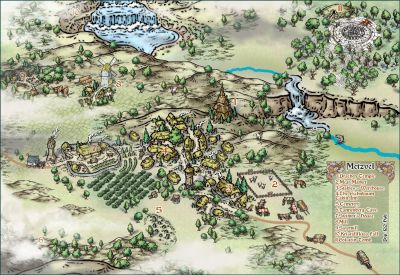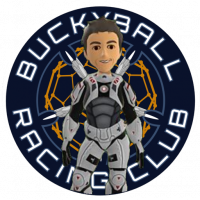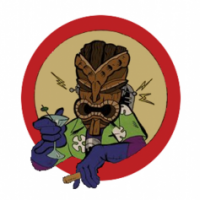
Monsen
Monsen
About
- Username
- Monsen
- Joined
- Visits
- 693
- Last Active
- Roles
- Administrator
- Points
- 8,947
- Birthday
- May 14, 1976
- Location
- Bergen, Norway
- Website
- https://atlas.monsen.cc
- Real Name
- Remy Monsen
- Rank
- Cartographer
- Badges
- 27
-
Missing Files?
Which one you should have doesn't just depend on the number of add-ons/annuals, but which ones specifically. Not every style installs a file there, even if it would have made sense to have it, but it is a manual process making these in the first place, and I suspect they are often overlooked.
Here's the list of my files. I've got absolutely everything installed. You can check with my list and see if there is anything missing that you think you should have depending on your installed products. (The CSUAC, Bogie, Digital marked ones comes from the community symbol packs, and are not standard PF files.)
CA Portrait.FCW CA116 Scorching Sun.FCW CA132A Bitmap Fills.FCW CA148 Moody Mansions.FCW CA149 Bitmap Fills.FCW CA150 imperial fills.FCW CA150 metric fills.FCW CA159_AlexandriaBitmapFills (metric).FCW CA159_AlexandriaBitmapFills.FCW CA163 Bitmap Fills.FCW CA24_ReliefFills.FCW CA27_FillStyles.FCW CA50 Bitmap Fills.FCW CA60A_TextureFills.FCW CA62 Fill Styles.FCW CA63 Bitmap Fills Metric.FCW CA63 Bitmap Fills.FCW CA67 Bitmap Fills metric.FCW CA67 Bitmap Fills.FCW CA69 Bitmap Fills.FCW CA70 Bitmap Fills metric.FCW CA70 Bitmap Fills.FCW CA71 Bitmap Fills.FCW CA94 Bitmap Fills metric.FCW CA94 Bitmap Fills.FCW CC2 Pro overland.FCW CC3 Bogie Overland.FCW CC3 CSUAC.FCW CC3 Digital Overland.FCW CC3 Digital Settlements.FCW CC3 Digital Structures.FCW CC3 dungeon.FCW CC3 overland.FCW CD3 All Bitmap Fills.FCW CD3 Bitmap Fills.FCW CD3 Bogie City.FCW CD3 Digital Settlements.FCW Cosmographer.FCW DD3 Bogie Dungeon.FCW DD3 CSUAC Battlemaps.FCW DD3 CSUAC Dungeons.FCW DD3 DA Battlemaps.FCW DD3 DA Dungeons.FCW DD3 DA Modern.FCW DD3 Digital Dungeons.FCW DD3 Dungeon Color.FCW Dioramas 3 Bitmap A.FCW Dioramas 3 Bitmap B.FCW Dioramas 3 Krom Village.FCW Dioramas Pro.FCW RPG Art Kits.FCW SS2 Bitmap A.FCW SS2 Bitmap B.FCW SS3 Bitmap Fills.FCW SS3 Overland Vector Fills.FCW SS3 Vector Fills.FCW SS4 Dungeon of Schley w Forlorn Cottage.FCW SS4 Dungeon of Schley.FCW
-
ProgramData setup files not getting deleted after installation
-
What is Steampunk...
I think I like contraptions to be plausible, which is a definite drawback in this case.
That's a drawback whenever you deal with fantasy. In classic fantasy, one has to suspend disbelief a bit in the face of magic, which can do stuff not normally possible. In steampunk, one kind of have to accept the same of their steam technology. It's basically their "magic". I guess it is quite similar as to how utterly unbelievable our modern world would be to a renaissance person (It's just that our version turned out to be possible under the laws of physics)
Interesting that Lego actually got involved.
It's not that lego got involved (AFAIK), it's just peoples tendency to build everything out of lego. Lego is a great outlet for creativity, you don't need the lego company to make a set for you to be able to make nice things. These days, you can even build lego online on their website, making designs without owning a single brick.
-
WIP: The World of Elric, Classic Fantasy Style
-
Scale issues with a metric map
-
Changing Background Colors
The easiest is to follow the instruction @Raiko provided above.
But for some more context. The Change background color command is a legacy command from back when backgrounds were solid colors, before we started using bitmap fills. When an entity has a bitmap fill, the color won't be visible (because you see the fill instead), so this command will appear to do nothing. As such, just ignore it unless you work with a map with a solid color background.
As for the error message about "FREEZE BACKGROUND", the cause for this is that the macro behind the command attempts to freeze the background layer, so this is a command, not the name of a layer it looks for. However, if something goes wrong with the macro (like it can't find a background entity [not all maps have one]), that can lead the macro to interpret that line as input to the layer selection instead, thereby complaining it can't find a layer with that name.
-
Another one with scaling issues on metric maps
When working with metric maps, make sure to set the symbol scale to 1 before placing them. Scale bars are scaled in map units, so they should always be scaled to 1 when placed to appear correct.
Other symbols are scaled for imperial by default, and should be placed at scale o.3048. This should already be set as the default value in metric maps.
To manually type in the size, just right click in your map with the symbol at your cursor. Here you can type in the desired scale for the symbol, or just hit the set normal button to go back to the default scale for that template. To scale things already in your map, you can also just type the desired scale on the command line when CC3+ requests it, instead of scaling by moving your mouse, this allow you to easily get the exact value.
-
Refreshing an old map with new textures
The reason they are using the current fill style instead of the one the tool should use is because that fill isn't in your map.
And by your own words above, you used a new Mike Schely Overland, but the tools you are showing in your screenshots are the SS4 Schley Dungeon tools. If you wish to use the dungeon tools, then you must also import the correct dungeon fill styles, not the overland ones.
-
Importing from a png
Hi Vorapsak, and welcome to the forums.
CC3+ isn't an image editor, and as such cannot work with your .png directly, but you can import it as a background image and then trace over it.
To import it as an image, simply use Draw -> Insert file. Note that before you do this, I recommend you make a new sheet to hold the image, and make this sheet the active sheet before importing the image. Having it on it's own sheet means you can more easily move it up/down in the drawing order (Sheets in CC3+ are analogous to layers in gimp, while layers in CC3+ is just a grouping mechanism, which doesn't control drawing order of entities.
Note that when inserting an image files, CC3+ only inserts a reference to the file, so once you have done this, you cannot move/delete the source file, otherwise it will just show up as a missing image (red X) in CC3+.
Please don't hesitate to ask if you have any questions about this. You'll also find some basic information about this starting on page 94 of the user manual (ignore that it talks about hand-drawn maps, the only difference between a hand-drawn one and one from an image editor is that you need to scan the hand drawn first to get it as an image) -
slow download speed?












